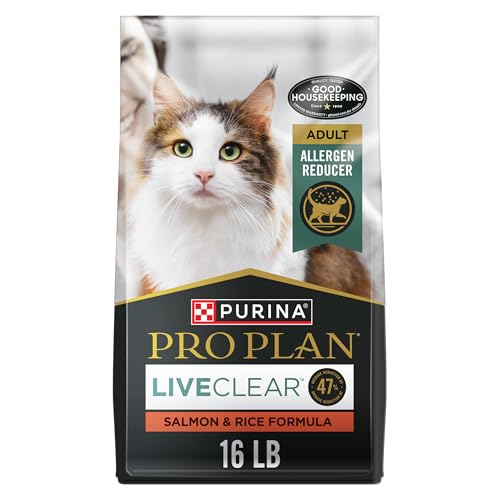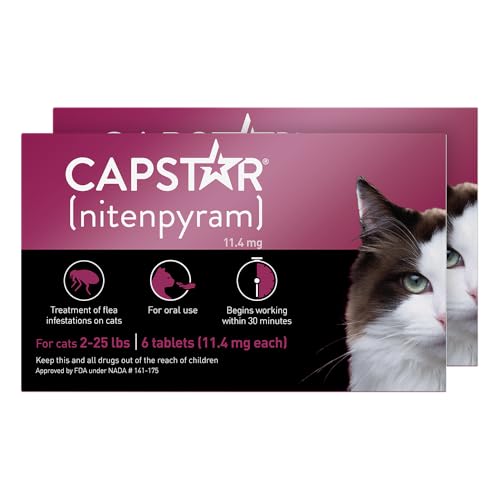First, approach with treats. Offering a favorite snack can quickly soften the mood. Watch for the ears to perk up and the tail to flick with interest–this is a sign that the tension is easing.
Next, create a calm environment. Speak softly and let your movements be gentle. Cats are sensitive to tone and body language. A relaxed atmosphere encourages trust and opens the door to reconciliation.
Then, engage in a preferred activity. Whether it’s a gentle scratch behind the ears or a cozy cuddle session, showing affection can demonstrate sincerity. Pay attention to their reactions; a purr or a contented knead can indicate forgiveness is on the horizon.
Finally, give space if needed. Sometimes, a little time apart allows for healing. Respect their boundaries, and they will come to you when they’re ready. Patience is key in rebuilding that bond.
Making Amends with Your Feline Friend
First, approach slowly. Cats appreciate space. Sit down nearby and let me come to you. Avoid sudden movements; I need to feel secure.
Offer a favorite treat. Something I adore–perhaps a piece of chicken or my special kitty snack. This gesture can help bridge any gap created by past actions.
Engage in gentle playtime. Use a feather toy or a laser pointer. This interaction can rebuild trust and create positive associations. Playtime is always a win-win.
Provide a cozy spot for relaxation. A soft blanket or a sunny window perch can show that you care about my comfort. Cats love to lounge, and this can help ease any tension.
Spend quality time grooming. Use a soft brush to make me feel pampered. This can strengthen the bond and signal that we’re back on good terms.
Monitor my behavior. If I seem distant, give me time. Understanding when to approach or let me be is key. Cats communicate differently than humans, so patience is essential.
For those concerned about health, check out how long do overweight cats live to ensure that care extends beyond emotions.
Understanding Your Feline’s Behavior After an Incident
Pay attention to the signs that indicate how I feel post-incident. Watch for changes in body language and vocalizations, which can provide insight into my emotional state.
- Tail Position: A low or puffed-up tail signifies stress or fear, whereas a relaxed tail indicates comfort.
- Ears: Forward-facing ears show curiosity or interest, while flattened ears suggest irritation or discomfort.
- Posture: Crouching or hiding may indicate a need for space, while a confident stance shows readiness to engage.
Understanding these behaviors helps in making amends effectively. Engage in gentle interactions, allowing me to approach at my own pace. Treats can also help rebuild trust. Offering my favorite snacks can create positive associations.
Curiosity can lead to changes in behavior. For instance, if I’ve shown interest in plants, ensure they are safe. You can check if specific plants, like the bird of paradise, are toxic to avoid future incidents.
Observing me closely will help you better comprehend my feelings and needs, paving the way for a harmonious relationship.
Practical Steps to Rebuild Trust with Your Feline Friend
Focus on creating a calm environment. Avoid loud noises and sudden movements around me. This helps reduce stress and anxiety, allowing me to feel secure.
Engage with Gentle Interactions
Use soft tones when speaking. Approach me slowly and let me come to you first. Gentle petting and scratching behind the ears can go a long way in mending our relationship.
Offer Treats and Playtime
Introduce my favorite treats to show affection. Play with toys that I enjoy, such as feather wands or laser pointers. This not only entertains but also helps rebuild our bond through shared fun.
Be patient and consistent. Trust takes time, and I will appreciate your efforts as you work to restore our connection.
First, approach with treats. Offering a favorite snack can quickly soften the mood. Watch for the ears to perk up and the tail to flick with interest–this is a sign that the tension is easing.
Next, create a calm environment. Speak softly and let your movements be gentle. Cats are sensitive to tone and body language. A relaxed atmosphere encourages trust and opens the door to reconciliation.
Then, engage in a preferred activity. Whether it’s a gentle scratch behind the ears or a cozy cuddle session, showing affection can demonstrate sincerity. Pay attention to their reactions; a purr or a contented knead can indicate forgiveness is on the horizon.
Finally, give space if needed. Sometimes, a little time apart allows for healing. Respect their boundaries, and they will come to you when they’re ready. Patience is key in rebuilding that bond.
Making Amends with Your Feline Friend
First, approach slowly. Cats appreciate space. Sit down nearby and let me come to you. Avoid sudden movements; I need to feel secure.
Offer a favorite treat. Something I adore–perhaps a piece of chicken or my special kitty snack. This gesture can help bridge any gap created by past actions.
Engage in gentle playtime. Use a feather toy or a laser pointer. This interaction can rebuild trust and create positive associations. Playtime is always a win-win.
Provide a cozy spot for relaxation. A soft blanket or a sunny window perch can show that you care about my comfort. Cats love to lounge, and this can help ease any tension.
Spend quality time grooming. Use a soft brush to make me feel pampered. This can strengthen the bond and signal that we’re back on good terms.
Monitor my behavior. If I seem distant, give me time. Understanding when to approach or let me be is key. Cats communicate differently than humans, so patience is essential.
For those concerned about health, check out how long do overweight cats live to ensure that care extends beyond emotions.
Understanding Your Feline’s Behavior After an Incident
Pay attention to the signs that indicate how I feel post-incident. Watch for changes in body language and vocalizations, which can provide insight into my emotional state.
- Tail Position: A low or puffed-up tail signifies stress or fear, whereas a relaxed tail indicates comfort.
- Ears: Forward-facing ears show curiosity or interest, while flattened ears suggest irritation or discomfort.
- Posture: Crouching or hiding may indicate a need for space, while a confident stance shows readiness to engage.
Understanding these behaviors helps in making amends effectively. Engage in gentle interactions, allowing me to approach at my own pace. Treats can also help rebuild trust. Offering my favorite snacks can create positive associations.
Curiosity can lead to changes in behavior. For instance, if I’ve shown interest in plants, ensure they are safe. You can check if specific plants, like the bird of paradise, are toxic to avoid future incidents.
Observing me closely will help you better comprehend my feelings and needs, paving the way for a harmonious relationship.
Practical Steps to Rebuild Trust with Your Feline Friend
Focus on creating a calm environment. Avoid loud noises and sudden movements around me. This helps reduce stress and anxiety, allowing me to feel secure.
Engage with Gentle Interactions
Use soft tones when speaking. Approach me slowly and let me come to you first. Gentle petting and scratching behind the ears can go a long way in mending our relationship.
Offer Treats and Playtime
Introduce my favorite treats to show affection. Play with toys that I enjoy, such as feather wands or laser pointers. This not only entertains but also helps rebuild our bond through shared fun.
Be patient and consistent. Trust takes time, and I will appreciate your efforts as you work to restore our connection.
First, approach with treats. Offering a favorite snack can quickly soften the mood. Watch for the ears to perk up and the tail to flick with interest–this is a sign that the tension is easing.
Next, create a calm environment. Speak softly and let your movements be gentle. Cats are sensitive to tone and body language. A relaxed atmosphere encourages trust and opens the door to reconciliation.
Then, engage in a preferred activity. Whether it’s a gentle scratch behind the ears or a cozy cuddle session, showing affection can demonstrate sincerity. Pay attention to their reactions; a purr or a contented knead can indicate forgiveness is on the horizon.
Finally, give space if needed. Sometimes, a little time apart allows for healing. Respect their boundaries, and they will come to you when they’re ready. Patience is key in rebuilding that bond.
Making Amends with Your Feline Friend
First, approach slowly. Cats appreciate space. Sit down nearby and let me come to you. Avoid sudden movements; I need to feel secure.
Offer a favorite treat. Something I adore–perhaps a piece of chicken or my special kitty snack. This gesture can help bridge any gap created by past actions.
Engage in gentle playtime. Use a feather toy or a laser pointer. This interaction can rebuild trust and create positive associations. Playtime is always a win-win.
Provide a cozy spot for relaxation. A soft blanket or a sunny window perch can show that you care about my comfort. Cats love to lounge, and this can help ease any tension.
Spend quality time grooming. Use a soft brush to make me feel pampered. This can strengthen the bond and signal that we’re back on good terms.
Monitor my behavior. If I seem distant, give me time. Understanding when to approach or let me be is key. Cats communicate differently than humans, so patience is essential.
For those concerned about health, check out how long do overweight cats live to ensure that care extends beyond emotions.
Understanding Your Feline’s Behavior After an Incident
Pay attention to the signs that indicate how I feel post-incident. Watch for changes in body language and vocalizations, which can provide insight into my emotional state.
- Tail Position: A low or puffed-up tail signifies stress or fear, whereas a relaxed tail indicates comfort.
- Ears: Forward-facing ears show curiosity or interest, while flattened ears suggest irritation or discomfort.
- Posture: Crouching or hiding may indicate a need for space, while a confident stance shows readiness to engage.
Understanding these behaviors helps in making amends effectively. Engage in gentle interactions, allowing me to approach at my own pace. Treats can also help rebuild trust. Offering my favorite snacks can create positive associations.
Curiosity can lead to changes in behavior. For instance, if I’ve shown interest in plants, ensure they are safe. You can check if specific plants, like the bird of paradise, are toxic to avoid future incidents.
Observing me closely will help you better comprehend my feelings and needs, paving the way for a harmonious relationship.
Practical Steps to Rebuild Trust with Your Feline Friend
Focus on creating a calm environment. Avoid loud noises and sudden movements around me. This helps reduce stress and anxiety, allowing me to feel secure.
Engage with Gentle Interactions
Use soft tones when speaking. Approach me slowly and let me come to you first. Gentle petting and scratching behind the ears can go a long way in mending our relationship.
Offer Treats and Playtime
Introduce my favorite treats to show affection. Play with toys that I enjoy, such as feather wands or laser pointers. This not only entertains but also helps rebuild our bond through shared fun.
Be patient and consistent. Trust takes time, and I will appreciate your efforts as you work to restore our connection.








